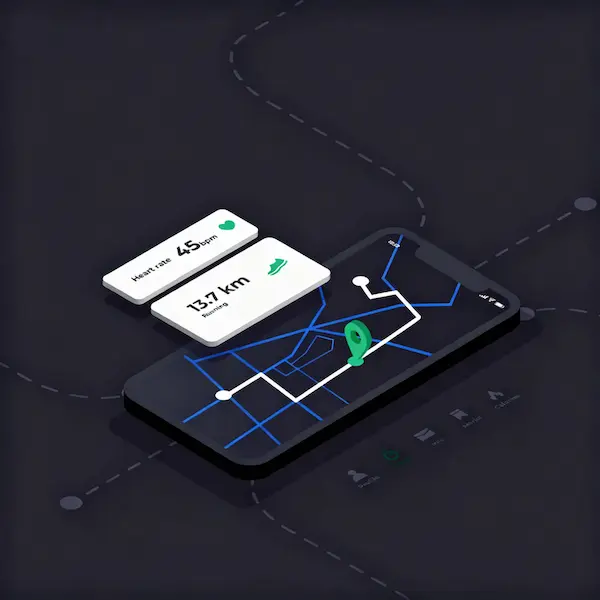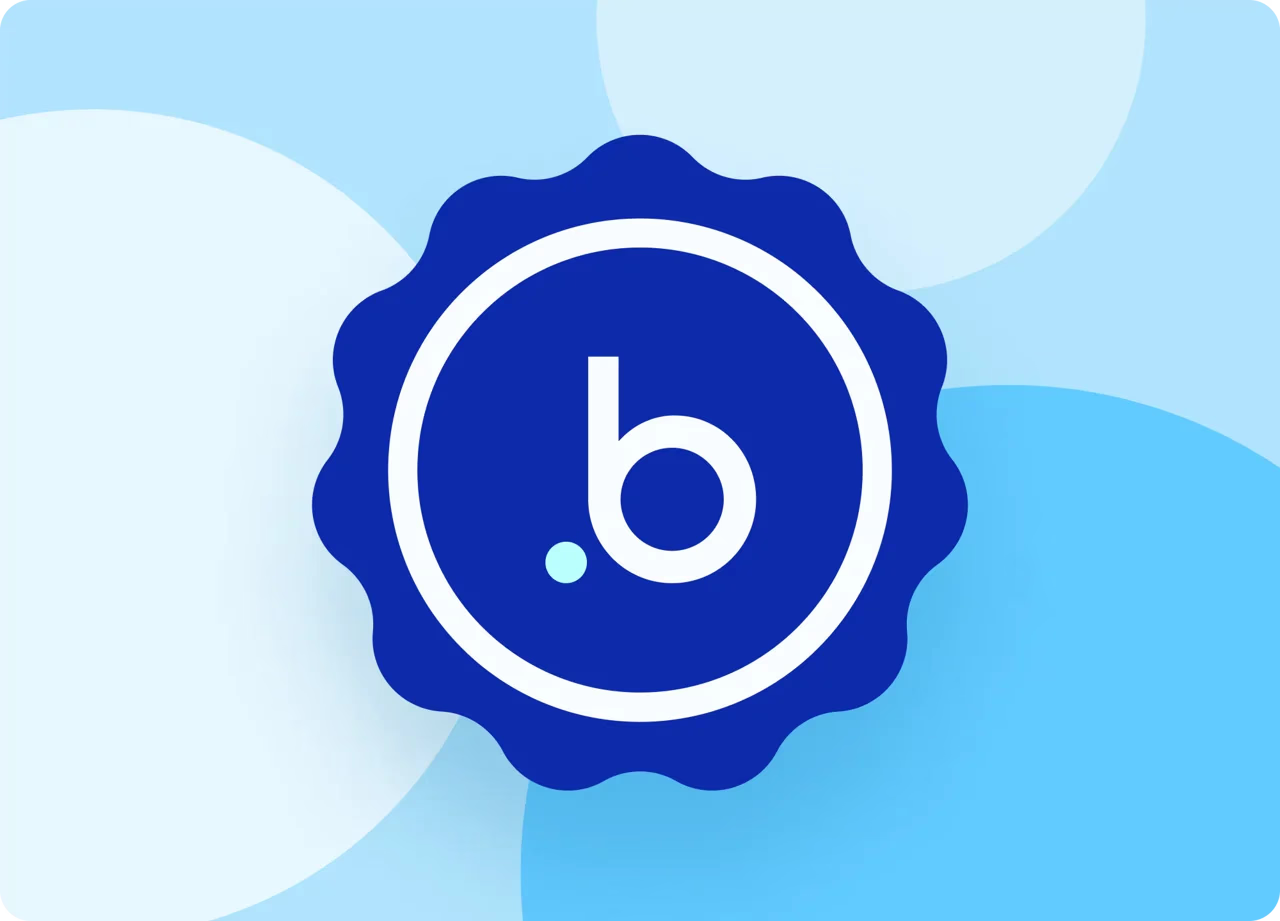

When a business owner posted on Reddit asking,
"Which no-code platform is best for creating an app for route optimization but have no coding experience,"
little did they know their question would spark a conversation about one of the most critical challenges facing delivery businesses today.
The original query was straightforward yet loaded with ambition: build a web app for route optimization without writing a single line of code. For anyone who's ever tried to manually plan delivery routes for multiple drivers, juggling traffic patterns, time windows, and vehicle capacities, this challenge hits close to home. Traditional route planning software can cost thousands of dollars monthly, requires technical expertise to implement, and often comes with features you'll never use.
Route optimization isn't just about finding the shortest path between two points. Modern businesses face a complex puzzle: How do you assign 50 deliveries across 5 drivers, accounting for traffic conditions, delivery time windows, vehicle capacities, driver lunch breaks, and last-minute order changes, all while keeping fuel costs down?
According to recent industry data, businesses waste an average of 2-4 hours every morning manually planning routes. That's 10-20 hours per week spent on spreadsheets and Google Maps, trying to create efficient routes that inevitably fall apart when real-world conditions hit. Traffic jams happen. Customers reschedule. Drivers take wrong turns. And suddenly, your perfectly planned route becomes chaos.
The entrepreneur's Reddit question touched a nerve because it represents thousands of small and mid-sized businesses caught in the middle. They're too big for Google Maps' 10-stop limit but too small to afford enterprise routing software. This gap in the market has driven entrepreneurs to explore alternative solutions for field service management that don't require technical expertise.
Most route optimization platforms available today fall into two categories: oversimplified apps with severe limitations or complex enterprise systems requiring IT departments to manage. Tools like Google Maps work fine for 5-10 stops, but what happens when you need to route 50 deliveries across multiple drivers? You're stuck manually creating separate routes, which defeats the entire purpose.
Enterprise-grade solutions offer powerful features but come with steep learning curves and minimum user requirements. Many require significant monthly investments just to get started, with 5-user minimums that small businesses can't justify. The pricing complexity alone can be overwhelming, with separate charges for features like real-time tracking, customer notifications, and proof of delivery.
For someone without coding experience, building a custom solution seemed impossible until no-code platforms emerged. These platforms promise to democratize app development, allowing anyone to create custom business applications without writing code.
Before diving into solutions, let's break down what a functional route optimization app actually requires:
Looking at this list, it's clear why most entrepreneurs feel overwhelmed. Building even a basic version of this from scratch would require months of development and significant investment. But what if you could assemble these components without coding?
The beauty of modern no-code platforms lies in their pre-built components. Instead of coding GPS tracking from scratch, you can add a GPS Location block that automatically captures coordinates. Instead of programming complex routing algorithms, you can leverage built-in analytics and mapping capabilities that visualize routes on interactive maps.
Here's how a non-technical founder can approach building a route optimization app using no-code tools:
The foundation of any route optimization system is accurate data. Begin by creating a delivery order form that captures:
Using no-code form builders, you can create this intake system in minutes. The delivery confirmation app approach shows how businesses capture this information efficiently without custom development.
One of the most powerful features in modern delivery apps is real-time driver tracking. With Live Tracking capabilities, dispatchers can monitor driver locations on a map view, see delivery progress, and identify bottlenecks instantly. This visibility alone can improve delivery efficiency by 20-30%, according to logistics studies.
Drivers use mobile apps that automatically update their location as they complete deliveries. This eliminates the constant "Where are you?" phone calls that waste time for both drivers and dispatchers.
The real power of no-code route optimization comes from automated workflows that handle repetitive tasks. For example:
These workflows eliminate manual coordination and ensure nothing falls through the cracks. What would take hours of phone calls and emails happens automatically in seconds.
Being able to visualize routes on a map isn't just impressive—it's essential for optimization. Interactive map views show delivery clusters, identify inefficient routing patterns, and help spot opportunities to consolidate routes. Analytics dashboards display key metrics like:
These insights help businesses continuously improve their routing strategies. You might discover that morning deliveries in certain neighborhoods consistently run late due to school traffic, prompting route schedule adjustments.
Let's visualize how this app functions from end to end. Understanding the workflow helps clarify what needs to be built:
This automated flow eliminates manual steps at every stage. No phone calls to assign deliveries. No text messages asking for updates. No paperwork for proof of delivery. Everything happens within the app ecosystem.
Let's walk through the practical steps of creating this application without coding:
Step 1: Create Order Management Forms
Start by building the intake form where dispatchers enter delivery orders. Include fields for customer name, phone number, delivery address, package details, delivery window, and any special instructions. The address capture feature automatically validates addresses and extracts GPS coordinates.
Step 2: Set Up Driver Management
Create a separate section for managing your driver fleet. Track vehicle types, capacity limits, certifications, and availability schedules. This information feeds into the assignment logic that determines which driver gets which delivery.
Step 3: Configure GPS and Mapping
Add GPS location blocks to capture real-time driver positions. Set up the map view that displays all active deliveries, driver locations, and completed routes. Enable geofencing to trigger automatic actions when drivers enter or exit delivery zones.
Step 4: Build Assignment Workflows
Create the logic that automatically assigns deliveries to drivers based on proximity, vehicle capacity, and current workload. Use workflow automation to handle this without manual intervention. The system calculates optimal assignments in seconds.
Step 5: Enable Mobile Access
Configure the mobile app interface that drivers use in the field. Ensure it displays route information clearly, allows easy navigation integration, and provides simple buttons for marking deliveries complete. The live tracking feature works seamlessly on mobile devices.
Step 6: Add Proof of Delivery
Integrate photo capture and signature collection at each delivery point. These digital records provide irrefutable proof that packages were delivered, protecting against disputes. Timestamps and GPS coordinates are automatically attached to each submission.
Step 7: Create Analytics Dashboard
Build reporting views that show delivery performance metrics. Map visualizations display route efficiency. Charts track on-time delivery rates. Tables list completed deliveries with all associated data. This analytics capability turns raw data into actionable insights.
Step 8: Test and Refine
Run pilot deliveries with a small team. Collect feedback on what works and what needs adjustment. The beauty of no-code is that changes take minutes, not weeks. Iterate based on real-world usage until the system flows smoothly.
"Can no-code really handle complex routing algorithms?"
Modern no-code platforms leverage the same mapping and optimization services that power enterprise solutions. The difference is in how you access them—through visual configuration rather than API coding. The underlying technology is identical.
"What about scalability?"
No-code platforms are designed to scale. Whether you're handling 50 deliveries per day or 5,000, the system grows with you. Cloud infrastructure automatically handles increased load, unlike self-hosted solutions that require manual server scaling.
"Won't I hit limitations eventually?"
The best no-code platforms offer extension points for custom code when needed. Start with visual development for 90% of your needs, then add custom scripts for specialized requirements. This hybrid approach gives you the speed of no-code with the flexibility of custom development.
Here's where no-code route optimization truly shines in value:
Traditional Route Optimization Software:
Custom Development:
No-Code Approach:
The savings are dramatic. But more importantly, non-technical founders maintain control. They can add features, adjust workflows, and customize the app without waiting for developers or paying consulting fees.
Once the core route optimization is working, non-technical builders can add sophisticated capabilities:
These aren't distant possibilities—they're features you can add incrementally as your operation grows. The beauty of the no-code approach is that improvements don't require project timelines and budget approvals. You can iterate continuously based on feedback from drivers and customers.
The field service management sector offers valuable lessons for route optimization. Field technicians, sales representatives, and service providers have been solving similar challenges for years. They need to:
By studying how field service apps handle these requirements, delivery businesses can borrow proven patterns. For instance, employee tracking solutions demonstrate how to balance productivity monitoring with driver privacy concerns.
One often-overlooked benefit of building your own route optimization app is ownership of your data. Third-party routing services don't give you raw data for analysis. You get their reports, but you can't dig deeper into patterns specific to your business.
When you control the platform, you can:
This data-driven approach leads to continuous optimization. Over months and years, your routing becomes smarter because it's learning from your specific operational patterns, not generic best practices. The asset tracking approach shows how data collection leads to operational improvements.
For entrepreneurs ready to tackle route optimization without coding, here's the starting guide:
The entrepreneur's Reddit question about route optimization represents something larger: small businesses claiming access to digital tools that were once exclusive to enterprises. Route optimization is just one example. Daily field inspection reports, employee attendance monitoring, and delivery driver logging—all of these business needs can now be addressed without hiring developers.
This democratization of technology is changing competitive dynamics. Small delivery businesses can now offer the same real-time tracking and precise ETAs that enterprise logistics companies provide. Local service providers can optimize technician routing as effectively as national chains. The playing field is leveling, and the winners will be those who embrace these tools fastest.
The traditional barriers to technology adoption—cost, complexity, and technical requirements—are crumbling. Entrepreneurs no longer need computer science degrees or venture capital funding to build sophisticated business applications. They need clarity about their processes, willingness to experiment, and commitment to iterative improvement.
The convergence of several trends makes this the ideal moment for non-technical entrepreneurs to build route optimization apps:
The question isn't whether to build a route optimization system—it's whether you'll build it now or play catch-up later when competitors have already seized the advantage.
The entrepreneur who posted that Reddit question asking about no-code route optimization platforms was asking the right question. The answer is clear: yes, you can build a sophisticated route optimization app without writing code. The technology exists. The platforms are accessible. The costs are reasonable.
Will your first version be perfect? No. But it will be yours—customized to your exact workflow, improvable on your timeline, and cost-effective at any scale. More importantly, you'll have learned the principles of route optimization through hands-on building rather than passive tool adoption.
For businesses drowning in inefficient routing, wasting hours on manual planning, or unable to afford enterprise software, no-code route optimization isn't just an alternative. It's often the best solution. The question isn't whether to build it yourself—it's when you'll start.
Start building your route optimization app - no code needed. Transform your delivery operations from chaotic spreadsheets to streamlined automation. Your drivers, dispatchers, and customers will thank you.

L374, 1st Floor, 5th Main Rd, Sector 6, HSR Layout, Bengaluru, Karnataka 560102, India

3500 S DuPont Hwy, Dover,
Kent 19901, Delaware, USA


3500 S DuPont Hwy, Dover,
Kent 19901, Delaware, USA

L374, 1st Floor, 5th Main Rd, Sector 6, HSR Layout, Bengaluru, Karnataka 560102, India







